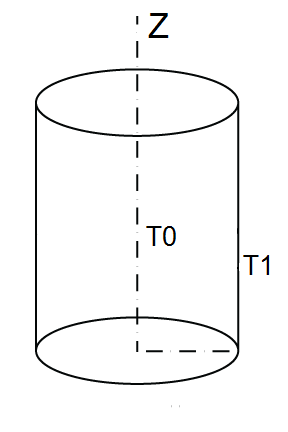I was wondering about this today, mainly for baking a cylindrical cake.
Say you have a solid cylinder which is at temperature T0 inside.
Say you then move the cylinder to a warm location (like an oven) which is at temperature T1.

Is it possible to achieve a rate equation for dT/dt=f(t) where T is the temperature exactly in the centre of the cylinder and t is time?
And therefore work out the time it would take this location to reach a temperature T2 somewhere between T0 and T1.
To keep it as general as possible I would prefer to assume the cylinder is height h and radius r.
I've been trying to use the thermal diffusivity equation:

But my working gets messy quickly, I figured as this is quite a simple shape it should be less complicated than some similar examples I've found.
EDIT:
So using my notes from a differential equations course a few years back I managed to do the following:

But I'm stuck here..

